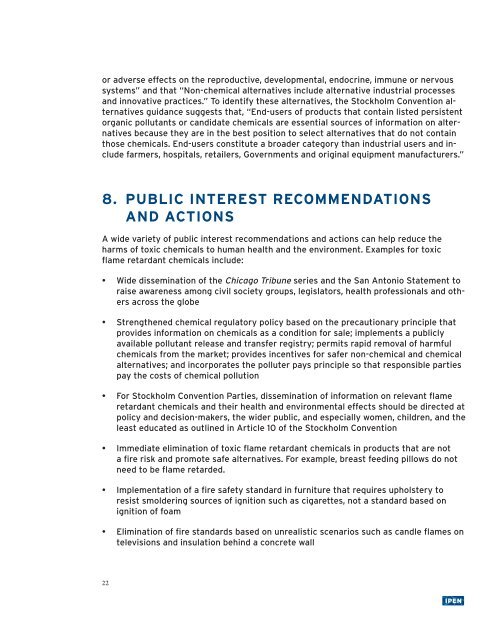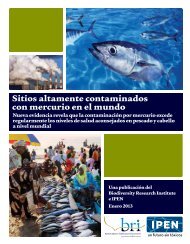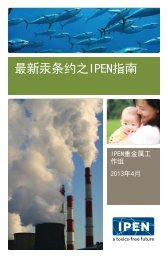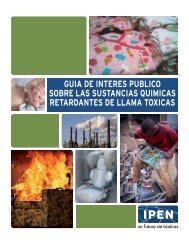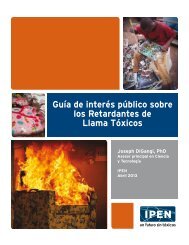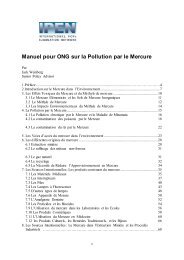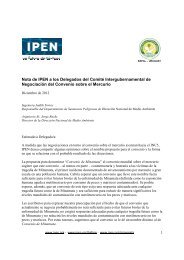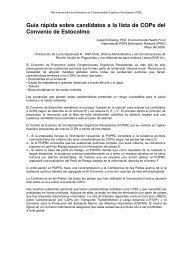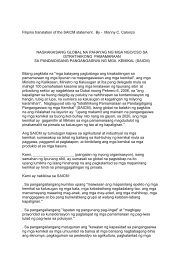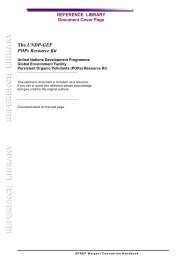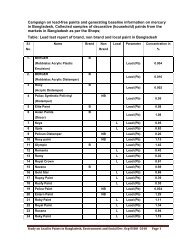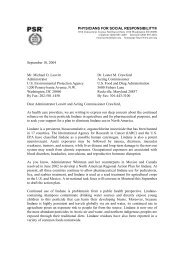A Public Interest Guide to Toxic Flame Retardant Chemicals
A Public Interest Guide to Toxic Flame Retardant Chemicals
A Public Interest Guide to Toxic Flame Retardant Chemicals
Create successful ePaper yourself
Turn your PDF publications into a flip-book with our unique Google optimized e-Paper software.
or adverse effects on the reproductive, developmental, endocrine, immune or nervous<br />
systems” and that “Non-chemical alternatives include alternative industrial processes<br />
and innovative practices.” To identify these alternatives, the S<strong>to</strong>ckholm Convention alternatives<br />
guidance suggests that, “End-users of products that contain listed persistent<br />
organic pollutants or candidate chemicals are essential sources of information on alternatives<br />
because they are in the best position <strong>to</strong> select alternatives that do not contain<br />
those chemicals. End-users constitute a broader category than industrial users and include<br />
farmers, hospitals, retailers, Governments and original equipment manufacturers.”<br />
8. PUBLIC INTEREST RECOMMENDATIONS<br />
AND ACTIONS<br />
A wide variety of public interest recommendations and actions can help reduce the<br />
harms of <strong>to</strong>xic chemicals <strong>to</strong> human health and the environment. Examples for <strong>to</strong>xic<br />
flame retardant chemicals include:<br />
• Wide dissemination of the Chicago Tribune series and the San An<strong>to</strong>nio Statement <strong>to</strong><br />
raise awareness among civil society groups, legisla<strong>to</strong>rs, health professionals and others<br />
across the globe<br />
• Strengthened chemical regula<strong>to</strong>ry policy based on the precautionary principle that<br />
provides information on chemicals as a condition for sale; implements a publicly<br />
available pollutant release and transfer registry; permits rapid removal of harmful<br />
chemicals from the market; provides incentives for safer non-chemical and chemical<br />
alternatives; and incorporates the polluter pays principle so that responsible parties<br />
pay the costs of chemical pollution<br />
• For S<strong>to</strong>ckholm Convention Parties, dissemination of information on relevant flame<br />
retardant chemicals and their health and environmental effects should be directed at<br />
policy and decision-makers, the wider public, and especially women, children, and the<br />
least educated as outlined in Article 10 of the S<strong>to</strong>ckholm Convention<br />
• Immediate elimination of <strong>to</strong>xic flame retardant chemicals in products that are not<br />
a fire risk and promote safe alternatives. For example, breast feeding pillows do not<br />
need <strong>to</strong> be flame retarded.<br />
• Implementation of a fire safety standard in furniture that requires upholstery <strong>to</strong><br />
resist smoldering sources of ignition such as cigarettes, not a standard based on<br />
ignition of foam<br />
• Elimination of fire standards based on unrealistic scenarios such as candle flames on<br />
televisions and insulation behind a concrete wall<br />
22


